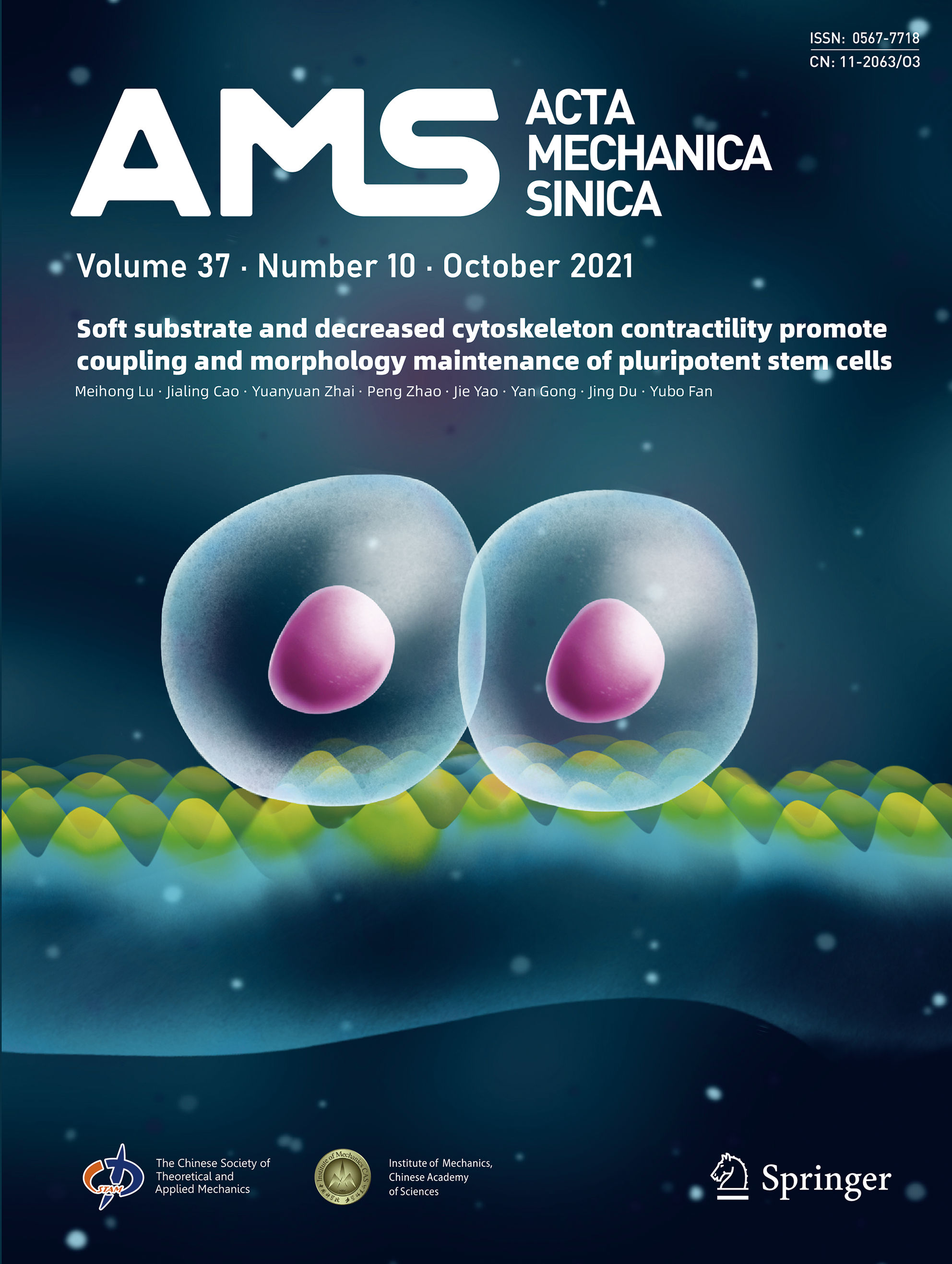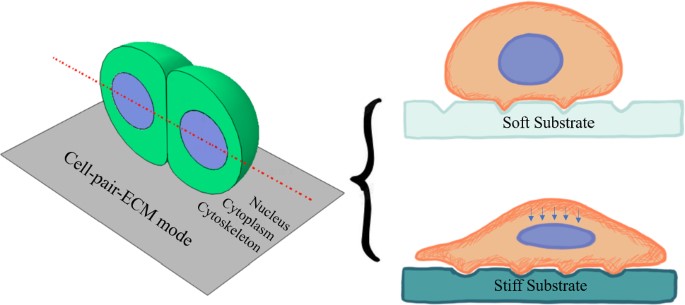You are here
Soft substrate and decreased cytoskeleton contractility promote coupling and morphology maintenance of pluripotent stem cells
Journal Tittle: Acta Mechanica Sinica
Article Tittle: Soft substrate and decreased cytoskeleton contractility promote coupling and morphology maintenance of pluripotent stem cells
Authors: Meihonh Sun, Jialing Cao, Yuanyuan Zhai, Peng Zhao, Jie Yao, Yan Gong, Jing Du, Yubo Fan

Research Background
Mechanical microenvironment has an important influence on the morphology and function of cells. Pluripotent stem cells grow in the form of multicellular cloning. Cell-cell and cell-substrate interactions have a crucial impact on the efficiency of stem cell pluripotency maintenance and reprogramming. Taking the hardness of extracellular matrix (ECM), intercellular adhesion and the shrinkage of cytoskeleton into considering, a complete three-dimensional cell-pair mechanical model composed of the nucleus, cytoplasm, and cytoskeleton was established. The cell-pair-ECM model can explain the interaction between stem cells and their mechanical niche more accurately and provide some predictions for the behavior of stem cells and reprogramming process.

Fig. 1 Dimensioned diagram of the cell pair geometries. The nuclei are shown in blue and the cytoplasts in green.
Progress
The cell-pair-ECM model is mainly based on the single cell–ECM model of Ronan et al.[Ref] , and takes the interaction between cells into account. Since the former considers the adhesion between cells, the average activation level of stress fibers is higher, which is also very reasonable. More importantly, the calculation results of the current model are consistent with the experimental results, which illustrates the rationality of the model to a large extent.
Using the proposed continuum cell model, our simulations show that substrate stiffness and cytoskeleton contractility will affect cellular morphology and conformation of the cytoskeleton, as well as change the contact state of the cells. With weaker cytoskeleton contractility, both cytoplasts and nuclei become looser and rounder. Meanwhile, on softer substrates, with the cells more compact and closer to each other, the nuclei become looser and rounder, whereas the polymerization of actin filaments is weakened, and plays a positive role in maintaining the pluripotency of stem cells growing on soft substrate and improving the reprogramming efficiency.

Fig. 2 Contour plots of the average SF activation levels (η¯) and predicted distributions of actin filaments in cell pairs adherent to ECM with different modulus.
Prospect
Establishing a mechanical model of pluripotent stem cell pair helps us understand the biomechanical behaviors of cells. Compared with simplifying the cytoskeleton to passive materials with hyperelasticity or viscoelasticity, taking the contractile properties of the cytoskeleton into consideration can explain the interaction between stem cells and their mechanical niche more accurately and provide some predictions for the behavior of stem cells and reprogramming process.
Corresponding authors

Yubo Fan, Beihang University, Beijing 100083, China, yubofan@buaa.edu.cn

Jing Du, Beihang University, Beijing 100083, China, dujing@buaa.edu.cn
Please go to the website to read this article: http://ams.cstam.org.cn/EN/abstract/abstract157594.shtml
| Attachment | Size |
|---|---|
| 32.57 KB | |
| 114.75 KB | |
| 11.96 KB | |
| 12.07 KB | |
| 5.43 MB |
- Acta Mechanica Sinica's blog
- Log in or register to post comments
- 1358 reads


Recent comments